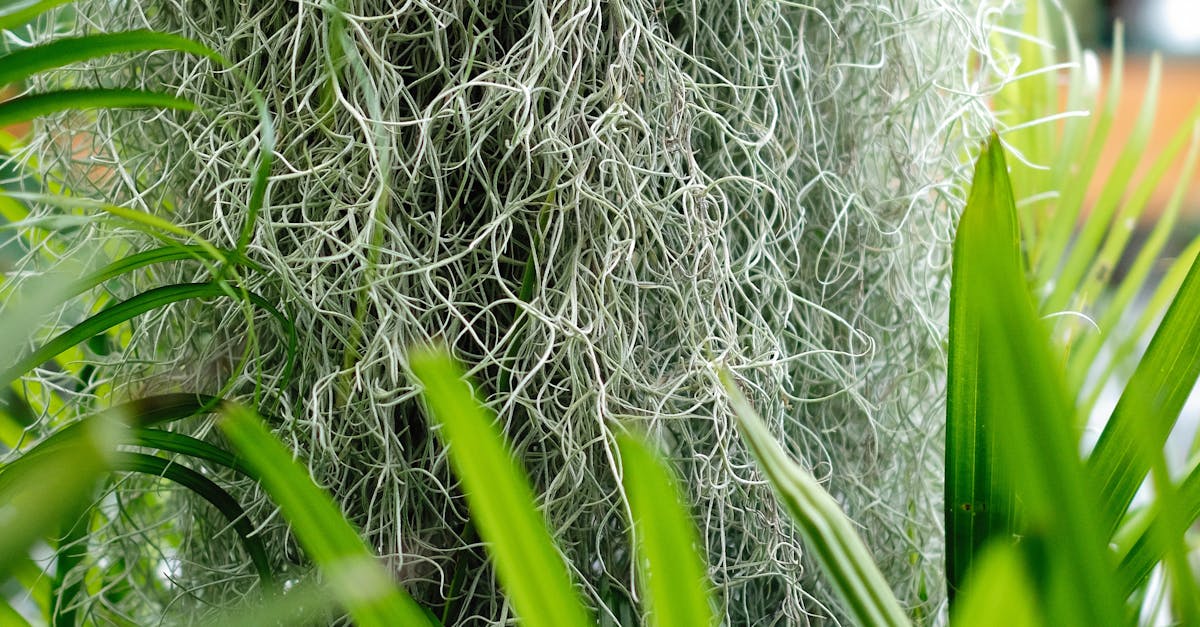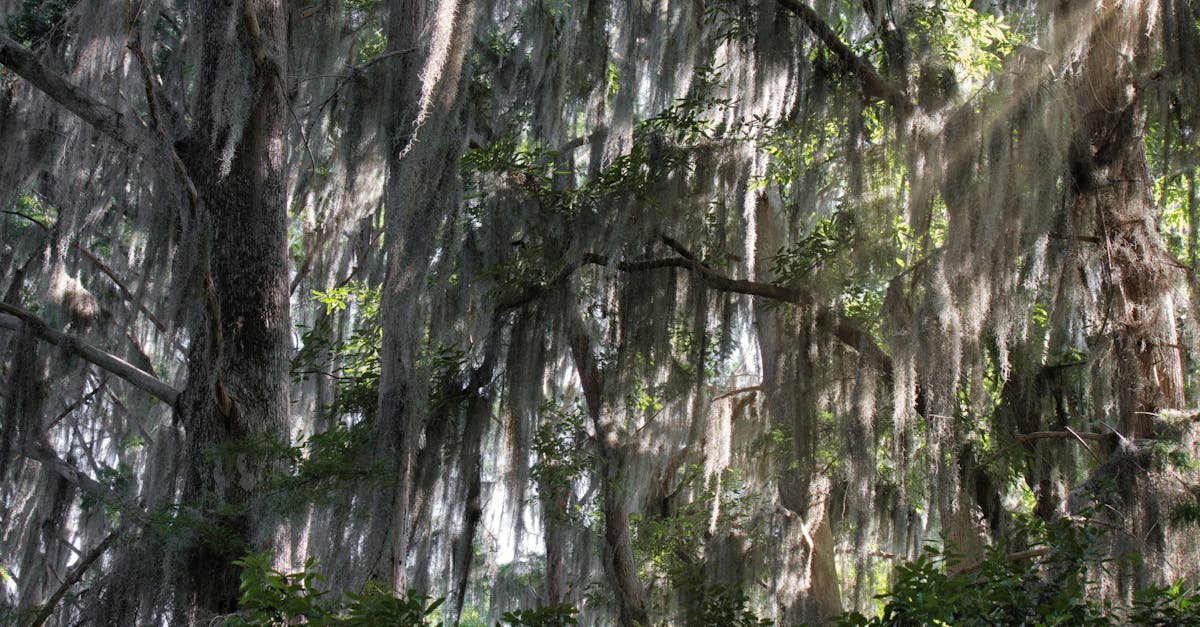Unveiling the Enchanting Tapestry of Spanish Moss: A Symphony of Nature’s Grace and Significance

Enchanted by Spanish Moss: Unveiling Nature’s Tapestry of Grace and Significance
Spanish moss, with its enchanting allure, is a natural wonder that holds a captivating presence in the world’s landscapes. Its delicate beauty and ecological significance make it a star of the show, adorning trees and ecosystems with an ethereal grace. This article delves into the enchanting world of Spanish moss, exploring its captivating characteristics, ecological importance, cultural significance, and ongoing conservation efforts.
Beyond its aesthetic charm, Spanish moss serves as a vital haven for diverse flora and fauna, contributing to the delicate balance of nature’s ecosystems. Its intricate structure provides shelter and nutrients, fostering a vibrant tapestry of life. Additionally, its rich cultural history intertwines with traditional medicine, art, and literature, showcasing its enduring presence in human traditions. As we unravel the enchanting allure of Spanish moss, we also emphasize the importance of conservation efforts to preserve its delicate beauty and ecological significance for generations to come.
1. Unveiling the Enchanting Allure of Spanish Moss
Unveiling the Enchanting Allure of Spanish Moss: A Tapestry of Nature’s Grace and Significance
Delve into the captivating world of Spanish moss, a natural wonder that weaves a delicate tapestry across landscapes. Its graceful presence adorns trees, creating an ethereal and enchanting atmosphere. This captivating plant, with its unique characteristics and widespread distribution, has captivated the hearts of nature lovers for centuries.
Spanish moss, scientifically known as Tillandsia usneoides, belongs to the family of air plants. Unlike traditional plants that derive nutrients from soil, Spanish moss is an epiphyte, meaning it grows on the branches of trees, using them as support rather than a source of sustenance. Its delicate, hair-like strands cascade downwards, forming a silvery-green curtain that dances in the breeze. This remarkable adaptation allows Spanish moss to thrive in a wide range of habitats, from humid forests to coastal regions, where it has become an iconic part of the natural landscape.
2. Ecological Significance: A Haven for Life

Ecological Significance: A Haven for Life
Beyond its captivating beauty, Spanish moss plays a critical role in the intricate tapestry of nature, serving as a haven for life and contributing to the delicate balance of ecosystems. Its unique structure and ability to absorb and retain moisture create a microhabitat that supports a diverse array of plant and animal species.
Epiphytic plants, such as orchids and ferns, find refuge amidst the strands of Spanish moss, utilizing its support to reach sunlight and access nutrients. Insects, including beetles, spiders, and moths, make their homes within its intricate web, finding shelter and a source of food. Birds, such as chickadees and wrens, utilize Spanish moss for nesting, its soft and pliable nature providing a cozy and well-insulated environment for their young. Additionally, the decomposition of Spanish moss contributes to the nutrient cycle of the forest, enriching the soil and supporting the growth of other plants.
The ecological significance of Spanish moss extends beyond its role as a habitat. Its ability to absorb and retain moisture from the air helps regulate humidity levels within the forest, creating a more stable microclimate. It also acts as a natural filter, removing pollutants from the air and contributing to the overall health of the ecosystem.
3. Graceful Beauty: A Tapestry of Silver
Graceful Beauty: A Tapestry of Silver
Spanish moss adds a touch of ethereal beauty to the landscapes it adorns, creating stunning visual displays that have captivated artists, photographers, and nature enthusiasts alike. Its delicate texture and silvery-green hue create a mesmerizing effect, especially when the wind gently sways its long, flowing strands.
When Spanish moss drapes over the branches of trees, it transforms them into enchanting works of art. The soft, flowing strands cascade downwards, forming an elegant and intricate tapestry that shimmers in the sunlight. This graceful presence enhances the natural beauty of forests, adding a touch of magic and mystery to the surroundings.
The aesthetic appeal of Spanish moss extends beyond its presence on trees. It also forms beautiful groundcover, creating a soft and inviting carpet beneath the forest canopy. Its silvery-green hue adds a touch of color and texture to the forest floor, complementing the surrounding vegetation and creating a harmonious and captivating scene.
4. Cultural Significance: A Timeless Symbol
Cultural Significance: A Timeless Symbol
Spanish moss has a rich cultural history, deeply intertwined with the traditions and folklore of various cultures. Native American tribes have traditionally used Spanish moss for a variety of purposes, including medicinal applications, weaving baskets and mats, and even stuffing pillows and mattresses. Its soft and absorbent nature made it a valuable resource for these communities.
In the realm of art and literature, Spanish moss has been a source of inspiration for centuries. Its unique beauty and ethereal presence have captured the imaginations of poets, painters, and musicians. Authors such as Edgar Allan Poe and Harriet Beecher Stowe have incorporated Spanish moss into their works, using its imagery to create a sense of mystery and atmosphere. Its distinctive appearance has also made it a popular subject for paintings and photographs, capturing the essence of the Southern landscape.
The enduring presence of Spanish moss in cultural traditions speaks to its timeless appeal and significance. It has become a symbol of the Southern United States, representing the region’s unique natural beauty and cultural heritage. Its presence in art, literature, and folklore ensures that its legacy will continue to inspire and captivate generations to come.
5. Preserving the Charm: Conservation Efforts
Preserving the Charm: Conservation Efforts
The delicate beauty and ecological significance of Spanish moss have prompted ongoing conservation efforts aimed at protecting its populations and habitats. These initiatives recognize the importance of responsible stewardship to ensure the continued flourishing of this natural wonder.
One of the key conservation strategies involves preserving and restoring the natural habitats of Spanish moss, particularly the forests and wetlands where it thrives. Protecting these ecosystems ensures the availability of suitable environments for the growth and reproduction of Spanish moss, as well as the diverse flora and fauna that depend on it.
Conservationists also emphasize the importance of responsible land use practices to minimize the impact on Spanish moss habitats. Educating landowners and the public about the ecological significance of Spanish moss helps foster a greater appreciation for its preservation. Sustainable forestry practices, such as selective logging and controlled burning, can help maintain healthy forest ecosystems that support Spanish moss populations.
Quiz: Test Your Knowledge of Spanish Moss
- True or False: Spanish moss is a traditional plant that grows in soil.
- Multiple Choice: What is the primary method by which Spanish moss obtains nutrients? (a) Photosynthesis (b) Absorption from the air (c) Parasitism
- True or False: Spanish moss provides habitat and food for a variety of animal species.
- Multiple Choice: What is a key factor in the cultural significance of Spanish moss? (a) Its use in traditional medicine (b) Its presence in art and literature (c) Both (a) and (b)
- True or False: Conservation efforts for Spanish moss focus solely on preserving its populations.
Answer Key:
- False
- (b) Absorption from the air
- True
- (c) Both (a) and (b)
- False
Answer Key:
- False: Spanish moss is an epiphyte, meaning it grows on the branches of trees and absorbs nutrients from the air and rain.
- (b) Absorption from the air: Spanish moss has specialized structures called trichomes that allow it to absorb moisture and nutrients from the air.
- True: Spanish moss provides habitat and food for a variety of animals, including insects, birds, and reptiles.
- (c) Both (a) and (b): Spanish moss has been used in traditional medicine for centuries, and its unique appearance and association with the Southern United States have made it a popular subject in art and literature.
- False: Conservation efforts for Spanish moss also involve preserving its habitats, such as forests and wetlands, which are essential for its survival.
